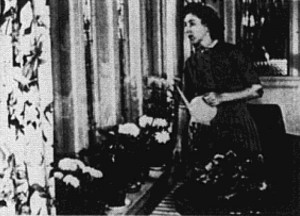
"Spring comes for John W. Ruddell and nature unfolds its little power plants of color and our cameraman has captured these beauties for us. The seed catalog heralds the coming of spring. The housewife busies herself with the new, pretty pages of flower pictures and goes into a bit of slumber. Then followed the results of a tremendous effort in filming single frame, time lapse growth of seeds, plants, trees, and flowers. This is not just another effort to make time lapse photography. The picture is sprinkled with unusual and amusing photographs of plant life and flowers, leaves grasses, carefully timed to the music. The choice and use of music in this picture does a great deal to enhance its effectiveness. A beautiful and delightful prelude to spring." PSA Journal, Nov. 1957, 32.
Prelude to Spring stands as the Canadian Film Awards' de facto Film of the Year for 1957 after the judges did not select a winner in the professional category.
"Edited film of Greece by a Greek immigrant to the United States was specifically created to educate American audiences to the true qualities and nature of the Greek people. Footage includes Athens, Greek ruins, and country villages," via the Human Studies Film Archives, Smithsonian Museum.
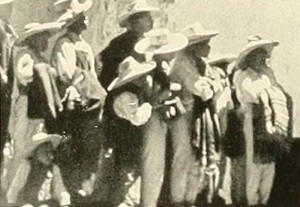
"One comes from a screening of Primitive Patzcuaro, by Ralph E. Gray, with an overwhelming impression of pure beauty. Here, in compositions which often echo the Old Masters in their warmth of color and satisfying balance, an amateur movie maker has turned his camera on the simple life about him and found it pleasing. One after another, the magnificent scenes and sequences bring from the spectator that involuntary expression of deep pleasure which is ambrosia even to the great of amateur movies. In Primitive Patzcuaro, Mr. Gray has portrayed, with leisure, the life of the Tarascan Indians, remote from civilization in a rarely visited section of Mexico. Although magnificent in its color studies, the film is abundant in human interest as well; in portions devoted to the bright native dances and religious ceremonies, it presents a series of tableaux that are breath taking in their effectiveness." Movie Makers, Dec. 1937, 626-627.
"Cheering crowds greet the Prince of Wales - later to be the uncrowned Edward VIII - as his car passes by. The crowds also turn out for the third World Scout Jamboree at Arrowe Park on the Wirral. With tens of thousands of scouts attending, the event commemorated the 21st birthday of the Scouting Movement and the publication of 'Scouting for Boys', so it became known as the Coming of Age Jamboree." (BFI Player)
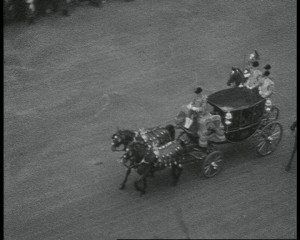
"Shots from an upper story window in Parliament Street of the activity in the street below prior to the arrival of carriages carrying the royal family and bride on their way to Westminster Abbey, during the ceremony and as the carriages return, highlighting in particular the foggy day. Scenes include crowds outside 100 Parliament St; a procession of civilians with flags which marches in the direction of the Cenotaph; the activities of troops prior to the arrival of the royal procession; carriages carrying the royal family and emerge from the fog near the cenotaph, are filmed as they pass by and head towards Westminster Abbey in the fog; activities in the street after the processions have gone; crowds waving at carriages as they return; activities as crowds disperse from in front of the building opposite; film concludes with a procession of civilians with flags which marches from the direction of the Cenotaph" (EAFA Database).
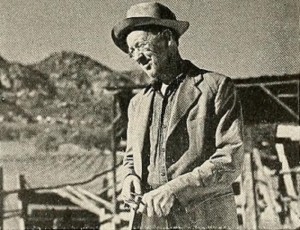
"The 'prize winner' of the title of course was just a goat who had pulled down for its owner a ten-dollar bill as a prize at the county fair, a sum which its owner promptly had sunk in the nearest bucolic palace of chance. The committee disregarded any possessive tendencies of its own in the goat line and decided the entrant really did know his onions when it came to making pictures. But of course every one even on the fringe of the amateur world knows J. Kinney Moore is one of the tops among the amateurs." American Cinematographer, Jan. 1938, 28.
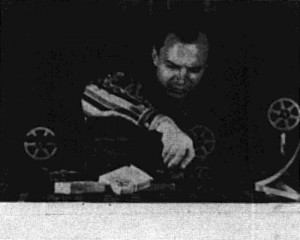
"A humorous experiment in the art of making a lip sync motion picture with magnetic sound. Even short productions can overcome the producer with startling results. Dr. Crane's "Production Able" indicates the first of a series and we are already looking forward to "Production Baker". Many will recall his "Show of Hands" in the 1958 Contest" PSA Journal, Nov. 1959, 47.
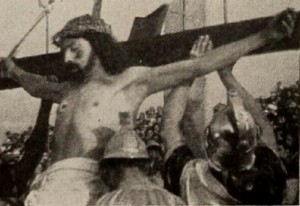
"It is a platitude that there is more in Mexico than meets the eye. In Quaint Old Mexico, however, Guy Nelli proves that there is far more in Mexico than usually meets the camera. Mr. Nelli presents the gradual awakening of Mexico, as the farmers drive their produce to market, with a startling sense of early morning atmosphere; market scenes are developed lucidly and effectively. The high peak of the film is reached with a most remarkable sequence of religious festival shots, as virtually an entire village re-enacts the Stations of the Cross. The intense religious emotion evident in these scenes has rarely been caught for the screen. Mr. Nelli's film is outstanding for its fresh approach and, above all, for the natural and casual quality of its shots." Movie Makers, Dec. 1946, 488.
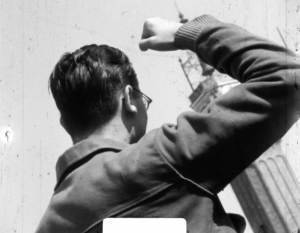
Documentary about how a wealthy family from Barcelona spends the last year of the Spanish Civil War, from the Francoist point of view. The film includes very rare footage of everyday life during the war, as well as reenacted scenes shot after the end of the conflict, and the use of stop motion and archival materials.
"A portrait of life on Pender Island, 1965. Shows the island's school; ferry service; crowning of the May Queen; church (and confirmation service); golf course; store; etc." British Columbia Archives.
Total Pages: 79